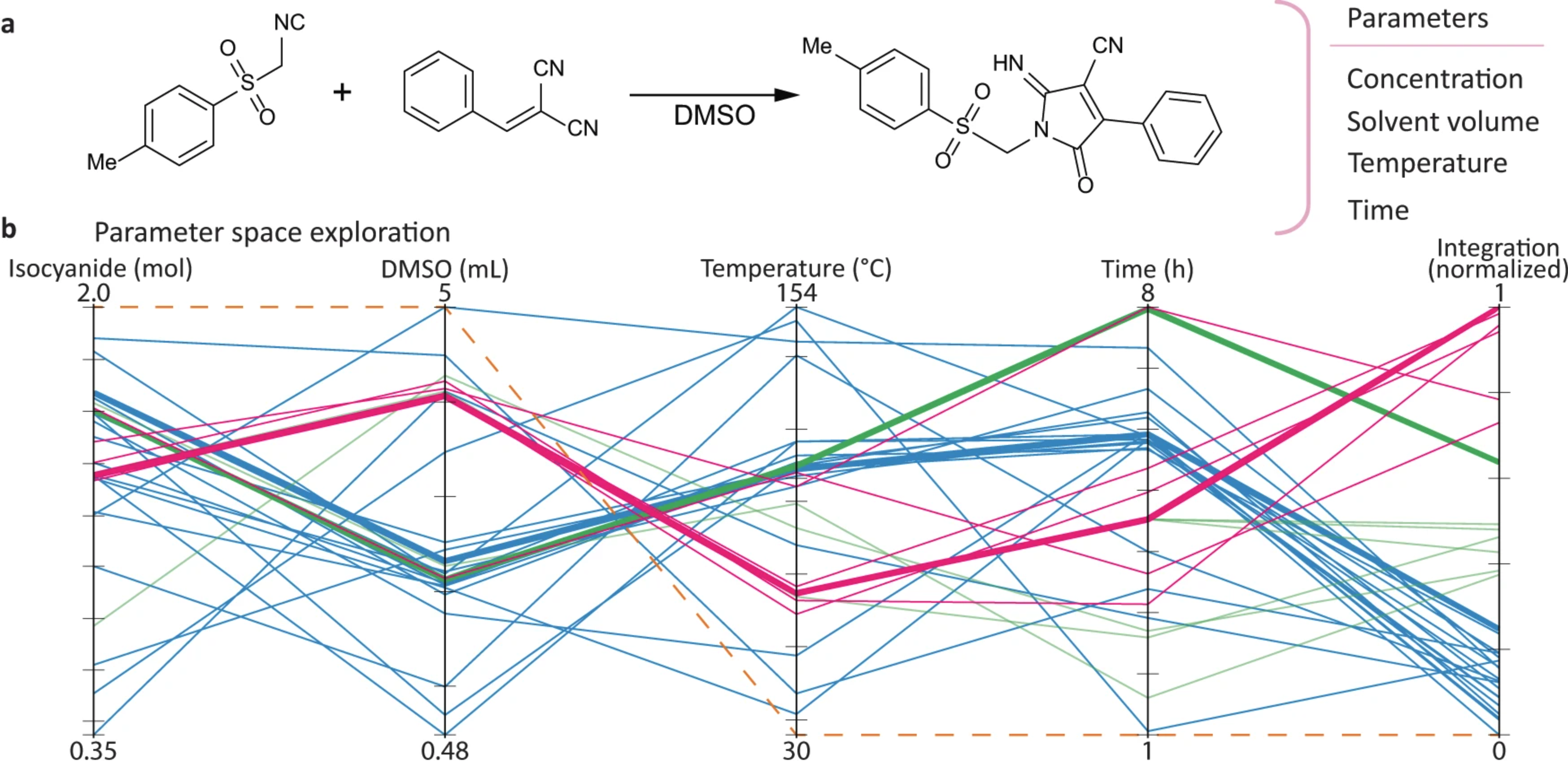Our latest collaborative output with the Cronin group, codenamed “Chemputer Optimiser” is out in Nature Communications. Work on this paper started many years ago while I was still a post-doc in the Cronin group, and continued throughout the pandemic. As expected with an open-ended project like this, we had to stop many times and ask ourselves what exactly the paper should aim to demonstrate and why it would be useful/interesting (a question that comes up time and again in academic research). In this note, I thought it would be worth highlighting one aspect of the project’s outcomes that may not be directly emphasised in the manuscript.
Optimisation is a big part of what chemists spend their time and energy on, in research as well as industry, so accelerating and automating it is of course quite useful. Extending the XDL chemical programming language for optimisation — in addition to synthesis, which was its initial focus — is another highlight and a development that unlocks new directions for digital chemistry. I want to highlight a third achievement, though: mapping out a path between discovery and optimisation.
If you’ve ever seen an odd trace signal in your crude NMR or a curious m/z in the mass spectrum of your reaction mixture and felt tempted to pick up a magnifying glass and dig deeper, amplify that blip in your spectrum and find out what it really is then you know exactly what I am talking about. If only we knew the right conditions to make enough of the trace impurity and isolate it! The unexpected compound could lead us to a whole new reaction or at least a new compound, and especially because you didn’t expect to see your impurity in the first place this compound is more likely to be interesting than something you did expect.
It was a great pleasure to be part of the team working on this project between 2020 and 2021. One interesting technical challenge was to automate our Agilent HPLC system so separations could run round the clock without wasting lots of solvent and we came up with a fun hack that I may write about in the future. Conceptually though, building a bridge between discovery and optimisation stands out as the paper’s most enduring contribution to me.

Leave a Reply
You must be logged in to post a comment.